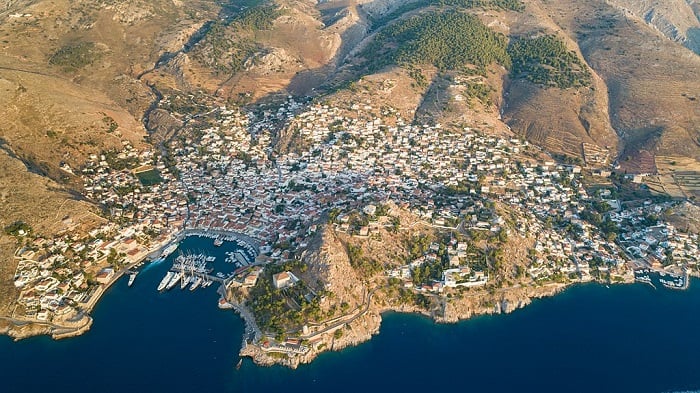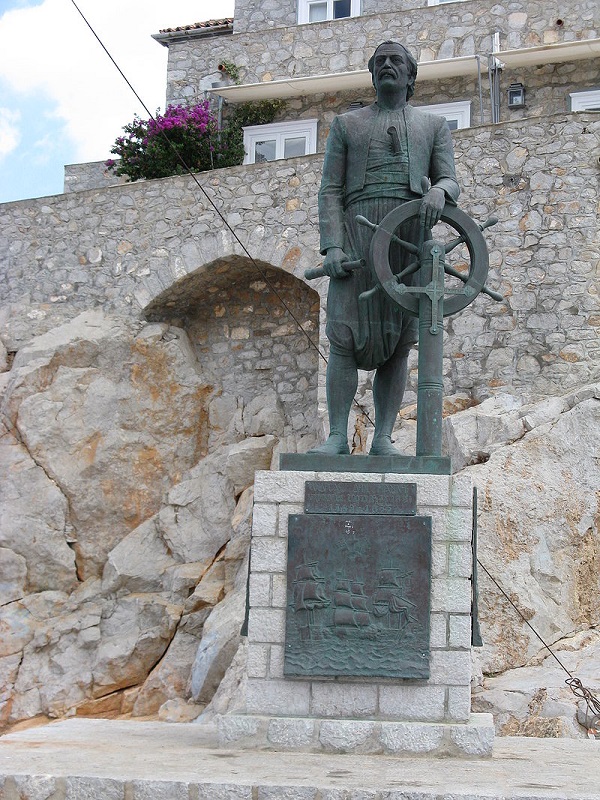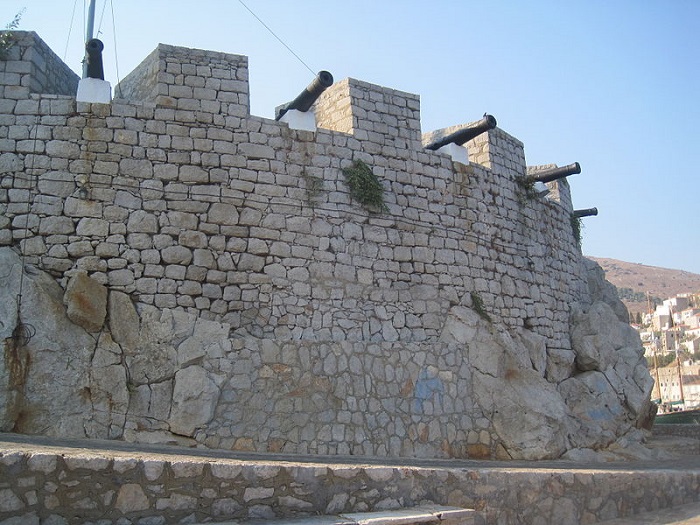
I remember growing up on Hydra every summer in the 1980s, leaving my Salt Lake City, Utah home, to go to our family home on my father’s native island in Greece.
A history-obsessed youth (not much has changed) I found it odd that the island was largely absent from ancient and Byzantine history, whereas other Saronic Islands in Greece, such as Poros and Aegina, certainly were not, and the Peloponnesus, a leisurely boat ride away, was the setting for at least 4,000 years of advanced civilization.
Most of the history books supported this thesis, but I could not help wondering why. My father talked about some sort of Byzantine settlement at Episkopi, an escarpment in the mountains.
Herodotus spoke of the island changing hands between Samians and various other Saronic powers. Yet, when compared to other sites, Hydra seemed absent from history.
Then there was riddle of the name, connoting water, a seeming misnomer on a rocky island with dry wells which now needs to import its water.
Hydra: center of the Greek Revolution
As for history, Hydra had plenty of modern glories to celebrate, as it was a key center of the Greek Revolution. But conventional wisdom made it clear that Hydra had been “absent” from history in prior eras.

I left things at the verdict of the 1980s, as my trips thereafter, even when we lived in Greece, were brief sojourns to escape Athens.
I had not the time, in the deep throes of a banking career in a dysfunctional pre-crisis era, to contemplate a more holistic story of Hydra, one that was being discovered, albeit with little fanfare.
Now I am separated from Hydra by an ocean — yet one never quite leaves Hydra, particularly now as we celebrate the year of Greece’s Bicentennial.
I involved myself particularly in our island’s 2021 Committee and celebrations, and this also dovetailed nicely with my extensive research of the Greek Merchant Marine.
Stone structures immersed in history
Several of my articles about Hydra commented on the relative lack of recorded historical events prior to the Revolutionary Era.
A fellow Hydriot gently corrected me, however. Every place should have a resident like Spilios Spiliotis — a person dedicated to telling the stories of their home place.
Such people are invaluable to preserving the memories, and the history, that is all too often forgotten or obscured.

I recall walking the high mountain paths of our island, and viewing the endless stone structures, enclosures, and walls, and no doubt Spilios had done far more of the same, for decades.
Mute stone structures usually cannot tell you their story and era, but if you have the time and patience, together with a passion for your subject, sometimes they do.
So it is with Hydra, where in the past thirty years a more active glimpse into the island’s mysterious past has begun, and it tells an altogether different, more complete story.
Such significant stories are often obscured by more glamorous ones, but for a Hydriot, any story about Hydra is significant.
What’s in a name?
Like several learned archeologists, the local Hydriot Spilios was not content with the official story of Hydra as a virtual “ghost” through most of Greece’s history.
Spilios participated in several excavations, some supported by the Niarchos Foundation, under the direction of Adonis Kyrou with the assistance of Hydra’s ecological group.
Thanks to their efforts, the archeological record, and sometimes the naked stones themselves, began to tell a different narrative than the one we had heretofore accepted.
What’s in a name? More than you think.
The name “Hydra” at first makes little sense, given the island’s aridity.
Well, perhaps there is another story, because archeologists in the 1990s seemed to have found a series of Mycenean-era stone channels designed to catch, collect and store potable water for boats plying the waters of the Aegean.
Evidence of such a collection system is particularly seen at St. Nicholas Bay on the southwestern tip of the island, at the edge of shipping lanes coming out of the Gulf of Nauplion.
The roughly hewn assembled stones easily pass for those of another era, but the name of the island, and the location and orientation of the stone trenches, suggest that the island, named “Hydrea,” was a provisioning site for potable water, and that the name stuck — for thousands of years.
These proto-aqueducts require further detailed study.
Herodotus and Hydra
Herodotus, the eyewitness-traveler, known worldwide as the “Father of History,” also referred to the island, and its changing hands between invaders from Samos and more local rulers from the nearby Saronic islands and the Peloponnesian mainland.
Here too, for so long any classical traces were hard to come by, in a Greece filled with the evidence of five millennia of history and a great love for artifacts and sites from the Classical era.
A careful reading of Herodotus, and a concerted effort, yielded results.
Outside of the seaside hamlet of Vlichos, favored by Hydriots and knowledgeable expats for its quiet beaches and taverna, across a small, seasonal wash, there is an Ottoman-style bridge which connects to a low hill.
I recall climbing this hill any number of times as a child, and I imagined it to have been a fortress from Classical or Byzantine times, as its low summit was full of rocks, both hewn and scattered.

Turns out my images — and Herodotus’ reports — were correct, as Samian coins corresponding to the time of their occupation were found on this very hill, as well as Aegina coins from their subsequent conquest.
Herodotus was proven correct, as in so many cases when his history was dismissed as legend and then proven by the archeological record. One more win for history’s father.
Then of course there is what lies beneath Hydra of today, the picturesque town beloved of painters, and here too there is the varied evidence of several periods of Greek history, particularly of a Byzantine era settlement on the escarpments in the current neighborhood of Kiafa.
Much is obscured by the current assemblage of houses from the 1800s, but an occasional contractor’s shovel yields the humble evidence of a bygone era, before Hydra’s glory days.
I am grateful to have been wrong when I wrote that Hydra was basically absent from history.
Perhaps our beloved island did not participate with the roar that she did later, in the Revolution, but the heart of the island still beat strong throughout the long, fascinating, glorious, and complicated assemblage of history that is Greece.
This distant past may yet have stories to tell. Stay tuned.
Spilios remains at the forefront of all things Hydriot. Visit his blogspot to stay in touch with the history and happenings of Hydra: https://hydraspoliteia.blogspot.com/
Alex Billinis is a Greek-American writer, author, lawyer, and university lecturer. He is the author of two books:
See all the latest news from Greece and the world at Greekreporter.com. Contact our newsroom to report an update or send your story, photos and videos. Follow GR on Google News and subscribe here to our daily email!



